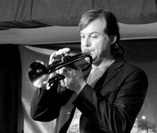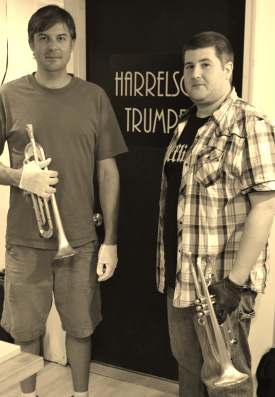 It is probably no surprise to you that I play the trumpet. In reality, I eat, sleep, breath, drink and dream trumpet while doing my very best to maintain a healthy balanced life. I personally have become one with this instrument in more ways than I can articulate. What was once the most difficult, frustrating and sometimes disappointing aspect of my life, trumpet, is now one of my better strengths. You see, I was the world's worst trumpet player for many years. In fact, I sat 13th chair in my high school band at the beginning of eleventh grade. I was so bad that I literally sat next to the door that exited the band room. My placement by the door was symbolic and reflective of my effort. I loved the sound of band rehearsals...thick sonorous textures, resonant upper overtones fluttering in the air while solid harmonies pressed against my chest. I was hooked on rehearsals, but my home life at the time was more about family and learning stability than about school work or band. We had moved all over the country up until I started fifth grade, living with numerous relatives in cities and states scattered around the United States and living in the semi truck. My parents were truck drivers and we didn't stop moving! So what changed? Well, everything once I decided to begin practicing the trumpet! But that is a very long story that I will save for another blog entry. Today, you only need to know that I began taking trumpet seriously when I was 16 and here I am today serving you, the brass musicians of the 21st century. My weaknesses on trumpet have been replaced with knowledge, experience, an understanding of science, psychology and self control. Trumpet is now one of my greatest strengths and I work hard every day to increase my musical and technical growth on the world's most difficult instrument. The real question today is, "How do I stay in shape on trumpet?" when I have so many other things to do. Clients visit my shop from all over the world on a regular basis and they have a reasonable expectation that I can and will demonstrate my techniques, theories and instruments proficiently. Unlike a trumpet factory that relies on generations of manufacturing and reputation, I take full responsibility for my instrument designs, Standing Wave Efficiency technology, Aperture control theory (my physics-based brand of understanding the embouchure), manufacturing, assembly, finishing, repair, sales, service, etc. In short, I do everything at Harrelson Trumpets. And though HT is made up of the entire Harrelson Trumpets family with James Soh and Jake assisting on finishing a prep work, James Knabe on the road showing horns and educating clients, Christine and Jen promoting and working with clients via phone, email, facebook and such, in the end I do all of these things on a daily basis. This leaves little time for practice. In fact, there is rarely more than one or two hours available per month for practice. So how do I stay in shape? By not practicing! Jake has mentioned more than once that I do not warm up as if this is an anomaly. However, I have heard there are others who do not warm up and someday hope to meet one or two of you. I don't practice either. Instead, every time I pick up a trumpet, I imagine what I want to play and become one with the horn. There is no reason any of us cannot start the day on any note. My first note of the day is always a surprise as I like to be spontaneous. Why do the same thing twice when we learn faster by creating new challenges. I usually start on a different note every day. I have about a 50% chance of starting my day on a note above the staff since half of my range is above the staff. With that said, I may start on a note in the bass clef as I play the entire bass trombone range daily. The only exception is when I have a problem with something specific. For instance, last summer I recall having difficulty playing my "B" on one of my Bb trumpets. Then I became obsessed with this note playing everything imaginable while always beginning and ending on B in any octave. I think I drove everyone nuts that week as I would play all of my B's again and again...below the staff, an octave lower, two octaves below the staff, above the staff, in the staff, double B, triple B, below the staff again, odd variations of whole tone intervals, then more B's in various octaves. It was therapeutic and I haven't missed a B ever since. In essence, I practice when I am testing trumpets or between machining jobs when something is cutting loudly in the background or in the two minutes everyone is getting ready to leave for lunch. I do in fact practice all the time, but it never looks like practicing. There is no regular place and time designated for learning at HT. I learn on the fly all the time. This environment is designed for growth, movement and innovation. I practice while cutting, sanding, soldering, eating, driving, sleeping etc. When I hear Jake, Christine or any of our visitors play something I want to learn, I remember it immediately and work it out long before I ever touch one of the many trumpets scattered about the shop. I know what I want to play before I ever play it at least half of the time. The rest of the time is usually free improvisation trying things I have never done or heard. I play A LOT of things I have never heard. When someone tells you that everything has already been done on trumpet (or anything), please smile and thank them for the advice. Then remember these words... "There is always More to learn the YOU can ever imagine!" Trust me, I have attempted to do the math and the number of possibilities for growth within the confines of the human reality is staggering. We are not physically capable of IMAGINING the full capacity of our own individual potential. Consider the following: - Isaac Newton (born in 1642) IMAGINED Einstein's theory of general relativity and photoelectric quantum physics almost two centuries BEFORE Albert Einstein provided a mathematical explanation. - Johann Sebastian Bach (born in 1685) CREATED hundreds of musical works that essentially define the majority of 20th century Jazz harmony and improvisation. - Radio waves, Micro waves, Ultrasonic waves, Trumpet Sound waves and Light waves are essentially variations of the same thing. All of these mediums are used for ALL communications in the known universe uniting all living beings within the energy web seen and unseen. - The human body has been fighting (and winning) against every known type of disease and ailment for thousands of years before anyone ever discovered the source of any disease known to man. - The earliest rendition of Standing Wave Efficiency was likely the most crucial concern when creating the first "brass" instruments as these evolved from horns and wooden instruments, the majority of which have not survived in physical form. - The largest commercial passenger aircraft in production today, the Dreamliner, was inspired by the aerodynamics of a living bird that has been testing physics for thousands of years. It seems obvious that flying birds were the inspiration for human flight in the beginning, but after 110 years of flight we look to nature for solutions. - Thomas Edison's most popular and successful invention was not the light bulb. Ironically, he didn't really understand the physics involved in creating this innovation. However, he did personally invent the screw type base for the light bulb which is the most popular in use even today. - Nikola Tesla (born in 1856) was rudely dismissed and publicly shamed repeatedly by none other than the "Greatest Inventor in the World" aka Thomas Edison. Despite Edison's jealous attempts, Tesla's true genius brought us the standard Induction Motor and Alternating Current electrical transmission systems in use throughout the US and world today. What you imagine today may or may not become physical reality in your lifetime. What you imagine on trumpet this very second may or may not become sonic reality today. Both are partially your decision within reason. I find that most people who bring their ideas to fruition begin with simple ideas, growing a library of small pieces of success that are later assembled into larger visions of innovation. Transcribe any Louis Armstrong solo and you will find that he was primarily outlining chords in the form of inverted arpeggios and following the melody while coloring with chromaticism. So why then do we consider him a genius and one of the fathers of Jazz Music? Because he mastered small pieces and assembled them into beautifully complex rhythmically compelling strings of sonic expression. So you want to design the next high efficiency car that runs on water? Or become the next John Coltrane? Go do it, one small imagined piece at a time! You could achieve your own seemingly impossible goals while doing other things necessary to life today. I learned to build and play trumpets throughout my entire life of realities including my time spent as a waiter, fork lift driver, police officer, Grand Canyon tour guide, dish washer, carpet installer, janitor, school teacher, woodworker, caterer, cook, security officer, student, graphic artist, machinist, auto mechanic, etc. I simply keep my eyes open and question everything in our world so that I have a better understanding of how and why our physical, social and psychological systems work together to produce success. You are potentially your best teacher, it is your choice to question, learn, repeat and apply.
2 Comments
Aaron
7/18/2013 03:30:20 am
VERY interesting and inspiring.Be encouraged Jason.
Reply
Chuck B.
7/18/2013 08:37:31 am
Very informative article Jason. I know a guy from a famous family here that doesn't warm up either and plays the heck out of the horn. Wish I could do it like that(maybe I can if I try). I don't want to name him here but will next time I see you. The great Leroy Jones himself has told me certain techniques to use when I have very little to no available time to warm up.
Reply
Your comment will be posted after it is approved.
Leave a Reply. |
Jason Harrelson
Inventor, Musician, Educator and Founder of Harrelson Trumpets, Trumpet Momentum and Harrelson Momentum. Archives
July 2024
|


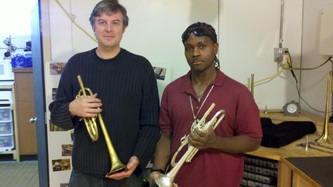


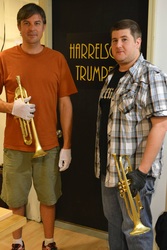
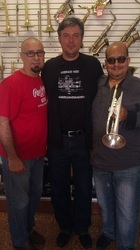

 RSS Feed
RSS Feed
